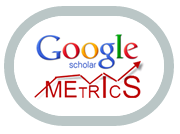Blended Learning as an Alternative for Learning in the New Normal Life
Resumo
This research aims to describe the Blended Learning in Junior High Schools. This research was conducted in the Surabaya City of East Java Province, Indonesia. To achieve the research objectives, semi-structured interviews were conducted with school principals, teachers, and staff education. The research data was analyzed through the stages of a case study and phenomenological analysis. The results showed that blended learning can make it more cost effective, time effisient, objects are reusable for relearning and flexible for students. Some things that need to be prepared before carrying out blended learning include; providing teacher who understands information and communication technology, providing internet facilities, digital libraries, modifying broadcast materials so that they are easier to understand and make students enjoy and anticipate things that hinder such as students who are frustrated because time is running out to learn the system. Blended learning is oriented towards achieving the learning objectives, namely increasing students' knowledge, skills and attitudes. Online and offline learning can increase insight and knowledge, and learning especially on specific materials. The combination of online and offline percentages can be adjusted to the needs of time allocation of learning in schools.
Palavras-chave
Texto completo:
PDF (English)Referências
Abdullah, W. (2018). Model blended learning dalam meningkatkan efektifitas pembelajaran. Fikrotuna, 7(1), 855-866.
Alammary, A., Sheard, J., & Carbone, A. (2014). Blended learning in higher education: Three different design approaches. Australasian Journal of Educational Technology, 30(4).
Bath D., & Bourke J. (2010). Getting Started With Blended Learning. Australian: Griffth University Press.
Brown, R. (2003). Blended learning: rich experiences from a rich picture. Training and Development in Australia, 30(3), 14-17.
Charles, D. D., Joel, L. H., & Patsy, D. M. (2004). Blended Learning. Research Bulletin, 7(1).
Husamah. (2014). Pembelajaran Bauran, Blended Learning, Jakarta: Prestasi Pustaka Publisher.
Ishak, A. & Dermawan, D. (2013). Teknologi Pendidikan. Bandung: PT Roda Karya.
Jackson, B. (2014). What Blended Learning Means for Teacher. Retrieved July, 21, 2015.
Jeffrey, L. M., Milne, J., Suddaby, G., & Higgins, A. (2014). Blended learning: How teachers balance the blend of online and classroom components. Journal of Information Technology Education, 13.
Kant, K. (2014). Blended Learning: A Latest Trend in Higher Education. University News, 52(34).
Kauts, A., & Kaur, G. (2014). Blended Learning: A Shift from Unimodal to Multimodal. University News, 52(09), 03-09.
Precel, K., Eshet-Alkalai, Y., & Alberton, Y. (2009). Pedagogical and design aspects of a blended learning course. International Review of Research in Open and Distributed Learning, 10(2).
Lalima, D., & Dangwal, K. L. (2017). Blended learning: An innovative approach. Universal Journal of Educational Research, 5(1), 129-136.
Nurhadi, N. (2020). Blended Learning dan Aplikasinya di Era New Normal Pandemi Covid 19. AGRIEKSTENSIA: Jurnal Penelitian Terapan Bidang Pertanian, 19(2), 120-128.
Rovai, A. P., & Jordan, H. M. (2004). Blended learning and sense of community: A comparative analysis with traditional and fully online graduate courses. International Review of Research in Open and Distributed Learning, 5(2), 1-13.
Shivam, R., & Singh, S. (2015). Implementation of Blended Learning in Classroom: A review paper. International Journal of Scientific and Research Publications, 5(11), 369-372.
Spika, P. (2002). Konsep dan Makna Pembelajaran. Bandung: Penerbit Alfabeta.
Vaughan, N. (2007). Perspectives on blended learning in higher education. International Journal on E-learning, 6(1), 81-94.
Yonge, P. K. (2014). Blended Learning: Making it Work in Your Classroom. Retrieved July, 22, 2015.
DOI: http://dx.doi.org/10.21902/Revrima.v3i41.5832
Apontamentos
- Não há apontamentos.
Revista Relações Internacionais do Mundo Atual e-ISSN: 2316-2880
Rua Chile, 1678, Rebouças, Curitiba/PR (Brasil). CEP 80.220-181


